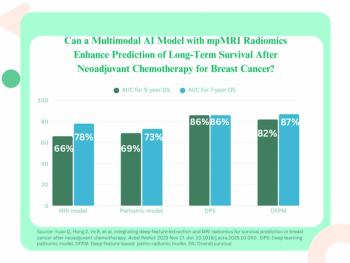
MRI Technique May Show Cognitive Decline Before Symptoms
Arterial spin labeling has shown changes in the posterior cingulate cortex among patients who went on to experience cognitive decline.
Arterial spin labeling (ASL) can detect cognitive decline before symptoms appear, according to a study published in the journal
Researchers from Switzerland and the Netherlands undertook a prospective study to determine if the use of ASL, an MRI technique that does not require a contrast agent, could predict early neuropsychological decline in older individuals who were cognitively intact.
“ASL MRI is simple to perform, doesn’t require special equipment and only adds a few minutes to the exam,” study author Sven Haller, MD, of the University of Geneva in Switzerland, said in a release.
The study comprised 148 consecutive healthy control subjects. Seventy-five subjects (43 female) had stable cognitive function (sCON) and were a mean age of 75.9; 73 subjects (44 female), who were a mean age of 76.8, had some deterioration of cognitive function. An additional 65 patients with mild cognitive impairment (MCI), who were a mean age of 76.2, were also included.[[{"type":"media","view_mode":"media_crop","fid":"28267","attributes":{"alt":"","class":"media-image media-image-right","id":"media_crop_2914367714428","media_crop_h":"0","media_crop_image_style":"-1","media_crop_instance":"2849","media_crop_rotate":"0","media_crop_scale_h":"0","media_crop_scale_w":"0","media_crop_w":"0","media_crop_x":"0","media_crop_y":"0","style":"height: 150px; width: 228px; border-width: 0px; border-style: solid; margin: 1px; float: right;","title":"Group average ASL-relative CBF maps. There is a global reduction in baseline perfusion in the dCON and MCI groups compared with the sCON group, notably in the PCC (arrow). Radiologic convention with the right hemisphere on the left side, color-coded group average relative CBF (in milliliters per 100 g per minute) superimposed onto the Montreal Neurologic Institute standard brain. Image courtesy of Radiology. ©RSNA, 2014. ","typeof":"foaf:Image"}}]]
The subjects underwent two-dimensional pulsed ASL at study baseline, as well as neuropsychological assessment. Statistical analysis included whole-brain voxelwise analysis of the ASL relative cerebral blood flow (CBF) data, receiver operating characteristic (ROC) curve analysis of the posterior cingulate cortex (PCC), and voxel-based morphometry analysis of gray matter. Follow-up was at 18 months.
The results showed that 75 of the 148 healthy subjects remained stable and 73 had deteriorated cognitively at follow-up. Imaging showed that the subjects who had deteriorated had reduced perfusion at their baseline ASL MRI exams, particularly in the posterior cingulate cortex. The pattern of reduced perfusion in the brains of healthy individuals who went on to develop cognitive deficits was similar to that of patients with MCI.
“There is a known close link between neural activity and brain perfusion in the posterior cingulate cortex,” Haller noted in the release. “Less perfusion indicates decreased neural activity.”
The researchers concluded that reduced ASL in the PCC at baseline is associated with the development of subsequent subtle neuropsychological deficits in healthy elderly control subjects. “Patients with dCON may maintain their cognitive status at baseline in spite of this CBF change because of their neurocognitive reserve; however, they will display the first neuropsychological deficits at 18-month follow-up,” they wrote.
Newsletter
Stay at the forefront of radiology with the Diagnostic Imaging newsletter, delivering the latest news, clinical insights, and imaging advancements for today’s radiologists.




























